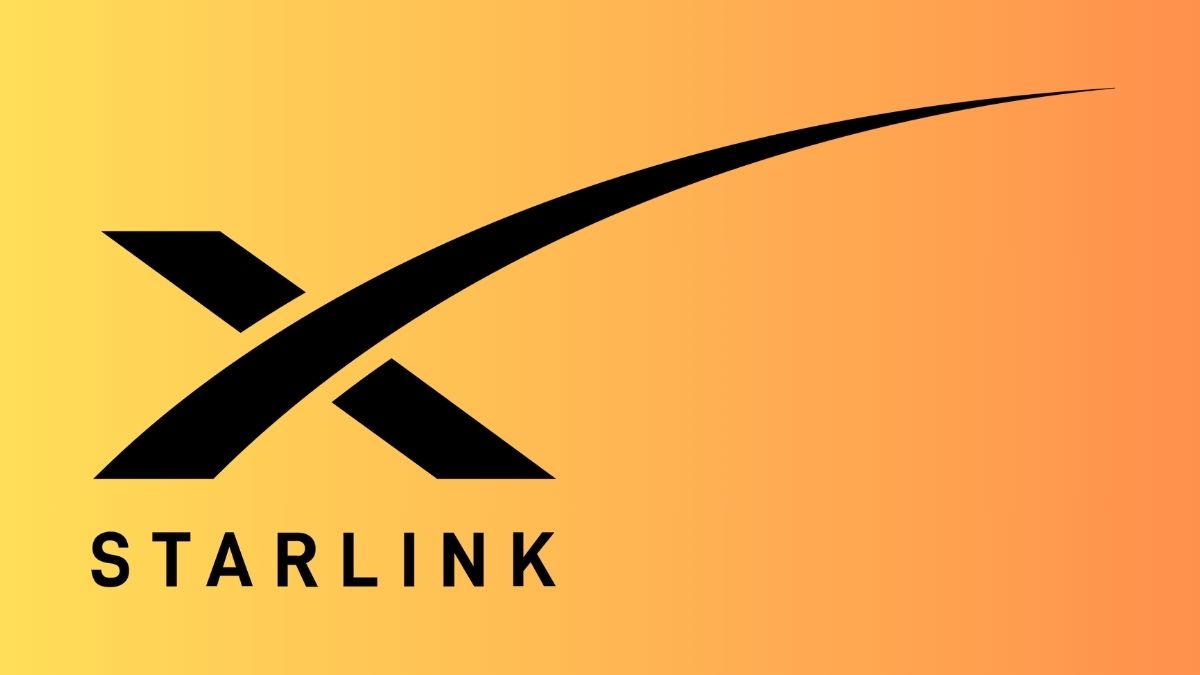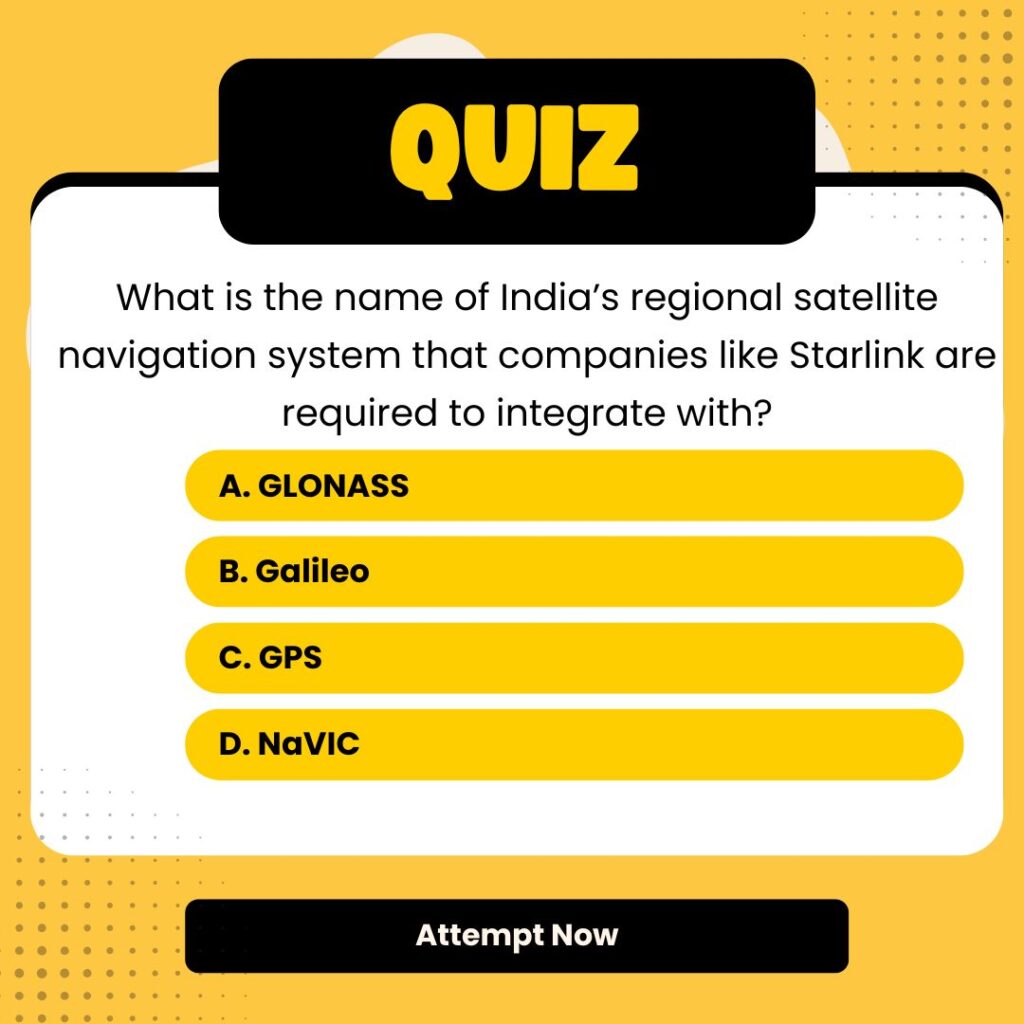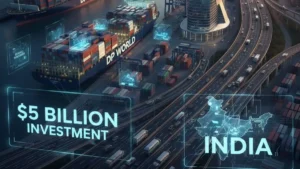In a landmark decision, Elon Musk-owned Starlink has received the green light from the Indian government to begin offering satellite internet services in the country. After a prolonged regulatory process spanning nearly three years, the approval marks a significant development in India’s digital and telecom ecosystem, opening new frontiers in satellite-based broadband connectivity, especially in remote and underserved regions.
Why in News?
Starlink has been issued a Letter of Intent (LoI) by the Indian government, allowing it to proceed toward acquiring a GMPCS (Global Mobile Personal Communication by Satellite) licence. This clearance comes soon after a high-level conversation between PM Modi and Elon Musk, and meetings between Starlink executives and Commerce Minister Piyush Goyal.
Key Highlights
- Company: Starlink (A division of SpaceX, owned by Elon Musk)
- Service: Satellite-based broadband internet
- Status: Received Letter of Intent for GMPCS licence
- Competitors: Reliance Jio, Bharti Airtel
- Technology: Operates ~7,000 satellites in low Earth orbit
Background & Objectives
- First Application: Starlink applied nearly three years ago for a licence.
- Objective: To provide high-speed internet access via satellite to rural, remote, and underserved areas.
- Challenge: Faced opposition from Indian telecom giants over spectrum allocation method.
Spectrum Debate
- Starlink’s Stand: Favored administrative allocation of spectrum.
- Jio’s Stand: Preferred auction route.
- Government’s Decision: Adopted administrative allocation, considering satellite spectrum is shared and technically hard to auction.
New Satcom Guidelines by DoT
- Local Manufacturing: At least 20% indigenisation in the ground segment within 5 years.
- Data Localisation: All Indian user data must be stored and processed within India.
Security Requirements
- Real-time traffic monitoring
- Blocking mechanism in times of hostilities
- Voice/data services require separate clearance
NavIC Integration
- Transition plan to adopt India’s NavIC navigation system by 2029.
DNS & Gateway Rules
- DNS resolution and user data routing must remain within Indian territory.
Broader Impact & Significance
- Improves digital inclusion in geographically challenging and remote locations.
- Enhances national security with strict data sovereignty measures.
- Strengthens India’s space communication capabilities and aligns with the goals of Digital India and Atmanirbhar Bharat.
| Summary/Static | Details |
| Why in the news? | Starlink Gets Government Nod: A New Era in Satellite Connectivity |
| Company Approved | Starlink (SpaceX) |
| Approval | GMPCS licence (Letter of Intent issued) |
| Service Type | Satellite-based internet |
| Competitors in India | Jio, Bharti Airtel |
| Key Government Conditions | Data localisation, NavIC integration, DNS within India, security clearance |
| Benefits | Wider coverage, remote connectivity, tech innovation |
| Manufacturing Clause | 20% indigenisation in 5 years |







 PayPal Joins Forces with OpenAI to Becom...
PayPal Joins Forces with OpenAI to Becom...
 Reliance and Google Join Forces to Stren...
Reliance and Google Join Forces to Stren...
 DP World Bets Big on India: $5B Investme...
DP World Bets Big on India: $5B Investme...







